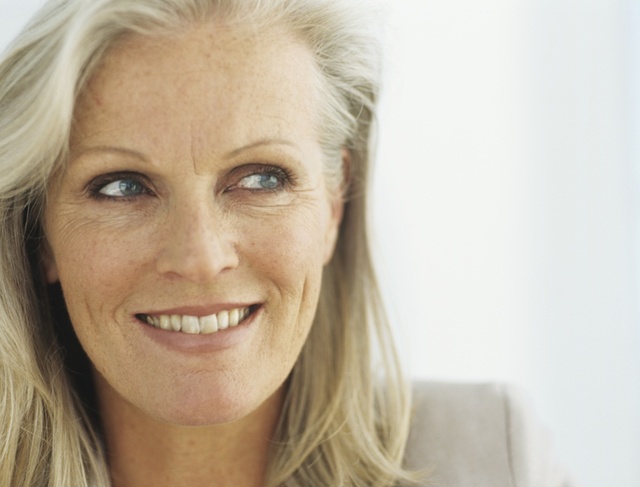Anti-Ageing Hair Care Routine – What Your Mature Hair Really Needs?
It’s not only the skin that is affected by the merciless passage of time. Hair gets a hard time, too: a dull shade, breakage, thinning, grey hair. Caring for mature hair is a challenge yet with a bunch of tips and a dose of knowledge about ageing hair, you’ll make it!
Mature hair – characteristics – what changes take place when you grow older?
The changes in hair condition and appearance are inevitable. With years passing, they are getting faster. Still, there isn’t a defined time when hair starts ageing. First changes are said to occur when we turn 30 – yet they are very slow. The process speeds up during the fourth and fifth decade of life – this is the time when the hormone balance is getting disturbed. What happens?
- The production of keratin (the main ingredient in hair) drops.
- The activity of sebaceous glands is reduced – hair loses moisture and protection.
- Hair pigmentation is different because the production of melanin is poorer or stopped: hair starts greying.
- Hydro-lipid balance changes, the number of lipids drops, hair loses protection.
What does mature hair look like?
The worrying signals, telling that your hair has reached maturity, include:
- excessive falling out (hair loss, thinning hair, bald spots);
- hair dryness and breakage;
- stiff and coarse strands, tangles;
- dull, lifeless hair;
- grey hair (the most common symptom of ageing hair).
Greying hair isn’t always connected with age. Because of permanent stress, hormone changes or other (more serious) factors, hair may go grey at a young age. If this happens, you should visit a trichologist who is going to examine your hair, give a diagnosis and tell you about the most beneficial hair care tips.
Anti-ageing hair care
The right care routine is the key to good condition and appearance of ageing hair. We can’t stop the clock, that’s for sure. On the other hand, we can make the process go more slowly and keep the hair look healthy and beautiful. The proper care will hold back hair breakage and thinning. What is the best anti-ageing hair care routine?
- wash your hair the right way;
- protect your hairdo from damage;
- nourish and regenerate from the very hair bulbs;
- deliver hair-repairing and enhancing ingredients.
Anti-ageing hair wash routine
The appropriate hair washing is the first most important step in anti-ageing hair care routine. It seems to be a child’s play but we end up making lots of mistakes. Hence the question – how to wash ageing hair?
- Use mild shampoos, as natural and safe for your scalp as possible, free of parabens and SLS, SLES.
- Massage the shampoo into your scalp, avoiding the lengths (washing the hair stem too harshly may lead to hair damage and breakage).
- Never use hot water for washing your hair – the water should be lukewarm both for washing and rinsing.
- For the final rinsing, use a mixture of water and herbal infusion or vinegar to close the hair cuticles and smooth the hair surface.
- Apply natural oils to hair for damage protection and smoothness.
Anti-ageing hair protection
You provide your hairdo with protection if you add natural hair oils to the beauty routine. Oils don’t just improve the condition of hair bulbs and scalp but also penetrate inner hair structures, nourishing from within and adding shine and volume. The combination of a hair oil treatment and scalp massage will stimulate the blood flow and reinforce hair bulbs in follicles. The level of melanin won’t be dropping as much.
Another key feature of natural oils is protecting the hair throughout its length. Protecting from damage is the basis for anti-ageing hair care. Thanks to oils, hair will not be so vulnerable when it comes to harmful weather conditions, smog, toxins and mechanical hair damage.
In summer and winter, you can protect your hair with a hat to shield it from the sunlight, frost, UV radiation. A warm or straw hat is a must.
What ingredients does your ageing hair need?
Make sure your mature hair receives essential nutrients. The most important ones include:
- keratin – the protein which is the key hair ingredient;
- coenzyme Q10 – responsible for keeping both skin and hair young, blocks greying and strengthens hair bulbs;
- collagen – takes part in rebuilding the hair structure and facilitates the cellular division;
- vitamins E, A, H – prevent hair loss, support the growth and cellular renewal;
- fatty acids – (found in natural vegetable oils) – reinforce the hydro-lipid hair barrier.
Anti-ageing hair products – which ones to choose?
For the full hair care, the hair stem isn’t the only part that needs support and protection. Caring for the scalp, bulbs and follicles is as important. That’s why scalp conditioners, natural oils (silicone-free) and ampoules (made up of natural ingredients) are welcome.


Ayurvedic Hair Oils. How Do Indian Women Care for Beauty?
Without doubts, there’s something mysterious and alluring about the beauty of Indian women...
Argan oil – what is the best way to use it in hair care?
The cosmetic properties of Argan oil are well-known to most women worldwide, therefore, its...
“Men prefer blondes”, blondes prefer Sheer Blonde Oil
John Frieda is a world-class cosmetic brand. Celebrities and their stylists reach out for its...
Oiling hair vs. hair mask. Which one will win the battle?
Many people still have very sceptical approach towards oiling hair. Natural oils are not very...